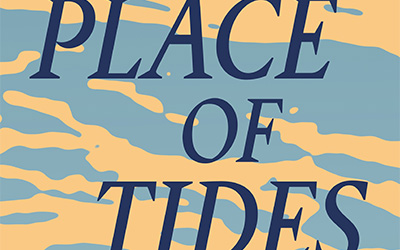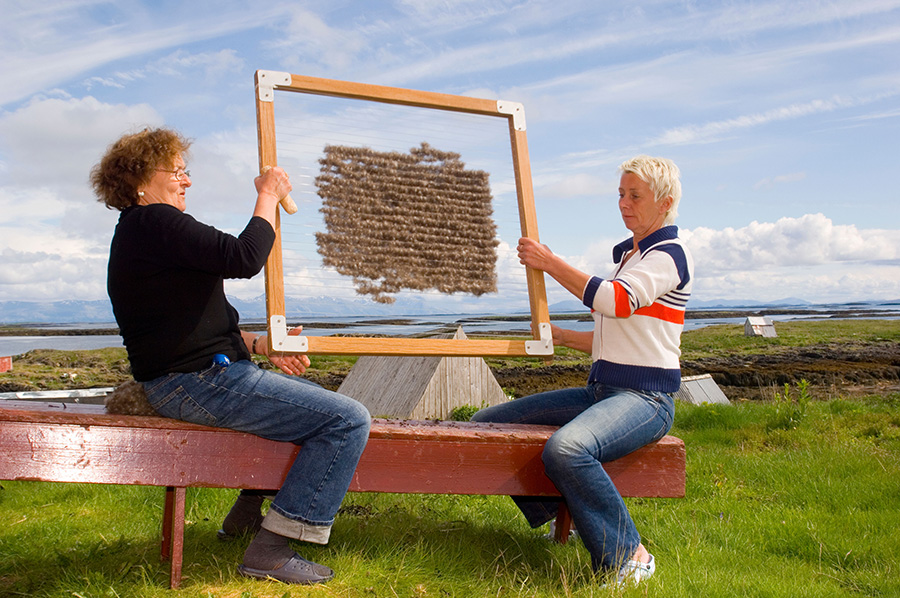
- Free Article: No
- Contents Category: Memoir
- Review Article: Yes
- Article Title: Watery hymns
- Article Subtitle: A tale of solace and regeneration
- Online Only: No
- Custom Highlight Text:
Readers who loved James Rebanks’s autobiographical The Shepherd’s Life: A tale of the Lake District (2015) – a bestseller at home and abroad, translated into sixteen languages, and winner of numerous prizes – will welcome this new work. His first book tells the story of a recalcitrant youth who wants nothing more than to leave school early to work on his parents’ and grandparents’ farm. Eventually, he resumes his studies, which take him to Oxford, and begins his richly evocative account of his life as a Lake District shepherd. What magnifies and deepens this apparently simple narrative and surely accounts for its universal imaginative appeal is that the work he describes is the continuation of a tradition going back more than a thousand years. Against the backdrop of the Cumbrian massif, daily human and animal preoccupations, hardships, and rewards – subject as they are to season, weather, and geography – have changed little since the last Ice Age retreated. In 2017, the Lake District was given World Heritage status, in part for its continuous agro-pastoral traditions.
- Featured Image (400px * 250px):

- Alt Tag (Featured Image): Sarah Day reviews ‘The Place of Tides’ by James Rebanks
- Book 1 Title: The Place of Tides
- Book 1 Biblio: Allen Lane, $36.99 pb, 304 pp
- Book 1 Cover Small (400 x 600):

- Book 1 Cover (800 x 1200):

- Book 1 Readings Link: https://www.readings.com.au/product/9780241729793/the-place-of-tides--2024--9780241729793#rac:jokjjzr6ly9m
Heated public debate surrounded the decision, with rewilders protesting that sheep farmers had reduced the high fells to treeless wastelands devoid of insects, birds, and mammals. Perhaps this situation played a part in Rebanks’s resolve to start farming in a more sustainable way, and his desire to leave a better place for future generations; this was the subject of his next book, English Pastoral: An inheritance (2020).
Caught between deep affection, loyalty, and respect for the practices of his forebears, and a desire to address environmental concerns, Rebanks tells of reaching a crisis of sorts. Experiencing a malaise of concern for the world’s future, and sheer exhaustion from being a full-time farmer, successful writer, and UNESCO employee, he is forced to take stock. Activism has taken its toll. He has ‘sickened’ of people looking to him as the fighter: ‘That’s why I remembered, geese take turns at the front when they migrate because the front bird is working the hardest, and the others ride in its slipstream. So, rather sensibly, they drop back after a while to catch their breath.’
Which is what he does. He reflects on a brief meeting, seven years earlier, with a lone eiderdown harvester on a remote island off the Vega Archipelago near the Arctic Circle. His boss, presumably from UNESCO, tells him that ‘the Norwegians took conservation seriously … and we can learn from them’. On an impulse, he writes to the elderly woman to ask if he may visit again, learn about her and her work, and write about her. She remembers him – the only Englishman who had ever visited her island – and agrees. We arrive by boat in the opening pages of Rebanks’s latest book, The Place of Tides, far from England’s mountains, on a remote skerry, hardly more than a reef, on the edge of Norway’s coastal shelf on the sixty-sixth parallel.
The Place of Tides, like The Shepherd’s Life, chronicles continuous indigenous human work and culture. It is about the close relationship between a people and its environment, so close that they hardly seem distinct. Rebanks spends a spring on the woman’s ‘vaer’ or sea estate in a remote family of tiny islands called Fjærøyvær, the Place of Tides. Along with her apprentice/friend, they prepare for the arrival of wild eider ducks by building huts and nests to protect them from their many predators such as feral mink, otters, sea eagles, and people. They are cut off by sea and weather, united in toil to protect an endangered species and an endangered way of life. In the simplest prose, Rebanks brings to life, through forensic observation of work, water, weather, tides, and light, these challenging and life-changing months.
 Two women working eiderdown, lånan island, 2007 (Rupert Hansen/Alamy)
Two women working eiderdown, lånan island, 2007 (Rupert Hansen/Alamy)
Plainness of language does not undermine the scope and depth of the premise of this work. In the tradition of other memorable British popular nature books, such as Raynor Wynn’s The Salt Path, John Lewis-Stempel’s The Running Hare, and Roger Deakin’s Waterlog, rhythm and repetition are intrinsic to what is described and the way it is described. It is not catalyst that propels the prose – though the arrival of the ducks is anticipated with mounting tension – but slow revelation and illumination. The reader is lulled into quotidian tasks and frames of mind. Testament to Rebanks’s long training in listening, looking, and waiting, much is revealed, not only of the tangible – his two companions, their labour, the island’s rock, birds, mammals, insects, plants, the tide’s movements, the sea’s moods, the air’s clarity or obfuscation – but the essential relationship between them all.
Simple and at times poetic language lays bare these remote lives: ‘People here worshipped a hard God and sang watery hymns and read psalms about fishermen’; ‘In some coastal parishes one in four men died at sea’; ‘My world was now dictated by the comings and goings of tides’; ‘I was learning that our dreams of islands as places of freedom and escape are fanciful – an island is defined by constraints and limits.’
The long tradition of eiderdown collecting is women’s work. Unlike the violent industrial process of duck-plucking which supplies most of the world’s down for jackets, doonas, and sleeping bags, the traditional process relies on the duck tugging the down from her breast to line her nest. Only when she and her young have left for the sea do the island women harvest the down. Rebanks is deferential – now and then overly so – to ‘the natural authority’ of women’s knowledge and skill, prudently establishing his allegiance to them early. When two men arrive unexpectedly in their midst, monopolising space and conversation in the small cottage, Rebanks says: ‘They sensed I wasn’t on their team and gave up trying to chat to me.’ Later, ‘I was here to do as I was told, and we both knew who was in charge.’ What he learns from the women of ecological wisdom, as well as nest-building craft, can only occur through patience and quiet respect. ‘This way of life demanded a loss of self, a surrendering.’
Why do we care if indigenous cultures fade from existence? This question lies at the heart of The Place of Tides, as was the case with The Shepherd’s Life. Industrialisation and capitalism have brought about homogenisation of language, landscape, and culture. As the United Nations University Institute for Environment and Human Security summarises: ‘When cultural heritage is compromised it diminishes a community’s connection to its past, disrupts the transmission of traditions and knowledge and erases the tangible and intangible markers of its identity.’ Indigenous peoples have been the Earth’s custodians for tens of thousands of years. Rebanks’s books testify that we are all diminished as each culture is lost. Much is to be learnt from old ways of knowing the environment. For Rebanks, the place of tides offers universal as well as personal solace and regeneration.


Comments powered by CComment